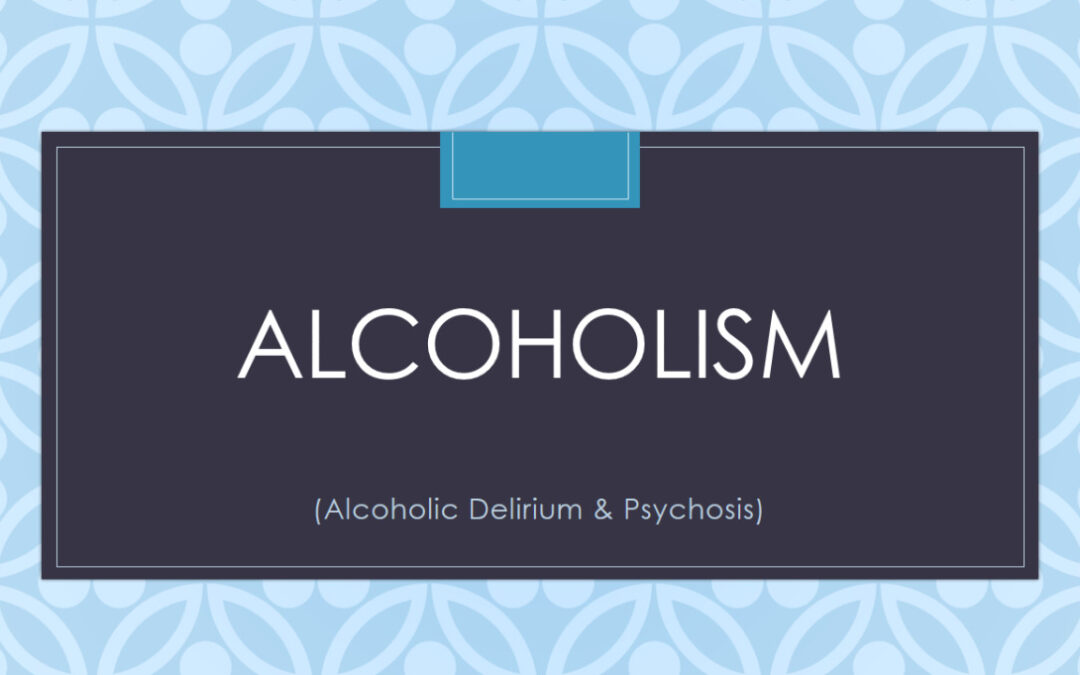Abstract
Alcohol is a new problem of the modern society. Alcohol when used in a low amounts might be good for health but in higher amount it is really hazardous for health. Alcohol distributes throughout the body ,affecting almost every system of the body and altering nearly every function of the brain. Greater than three standard drinks per day enhances the risk for cancer and vascular disease. It should be noted that alcohol use disorders decrease the life span by about ten years.
Ethanol blood levels are expressed as milligrams or grams of ethanol per decilitre. Alcohol is absorbed from mucous membranes of the mouth and esophagus .It is also absorbed from the stomach and large bowel and also from the proximal portion of small intestine ( major site). Metabolism of alcohol is mainly through two process
- Ethanol in presence of MEOS is converted to Acetaldehyde.
- Ethanol in the presence of alcohol dehydrogenase(ADH) is converted to Acetaldehyde then in presence of ADH converted to acetate goes through citric acid cycle and gets converted to carbon dioxide and water.
Introduction
Though alcohol affects all the neurotransmitters and their systems. The most prominent action is related to boosting of gama aminobutyric acid ( GABA) activity, especially at GABA receptors. Enhancement of this complex chloride channel system contributes to anticonvulsant, sleep inducing, anti- anxiety and muscle relaxation effects of all GABA- boosting drugs. With all pleasurable activities alcohol activity increases dopamine levels in brain regions resulting in continued alcohol use, craving and relapse. The changes in dopamine levels are linked to increase in stress hormone including cortisol and Adrenocoticotropic Hormone ( ACTH).
Alcohol and it’s affects:-
Behavioural Affects-
The effect of any drug depend on its use. The rate of increase in plasma, the presence of other drugs in the body and past experience with the agent. Legal intoxication with alcohol in most states requires a blood alcohol concentration of 0.08g/dL .Levels of 0.04 are also cited in some countries. However behavioural, psychomotor and cognitive changes are seen at 0.02- 0.04 g/dL. Blood alcohol levels of 0.30 may cause light coma and depressed vital signs. Blood alcohol levels of 0.40 may lead to death.
Psychiatric Comorbidity–
As many as 2/3 of the individuals with alcohol use disorders meet the criteria for another psychiatric syndrome according to the fifth edition of Diagnostic and statistical manual of Mental disorders of the American Psychiatric Association. Half of these relate to pre-existing antisocial personality manifesting as impulsivity and disinhibition that contributes to both alcohol and drug use disorders. The life time risk is 3% in males and greater than or equal to 80% of such individuals demonstrate alcohol or drug related conditions. The remainder of alcoholics with psychiatric syndromes have pre existing conditions such as schizophrenia or maniac depressive disease and anxiety syndromes such as panic disorders.
Many psychiatric syndromes can be seen temporarily during heavy drinking and subsequent withdrawal which may include an intense sadness lasting for days to weeks. In the midst of heavy drinking seen in 40% of alcoholics which tends to disappear over several weeks of abstinence( alcohol induced anxiety disorders Andy and auditory hallucinations or paranoid delusions.
Systemic Affects-
Nervous System–
- Approx 35% of drinkers experience a blackout temporary amnesia.
- Disturbed sleep.
- Disturbing dreams sometimes or occurring prominently in night.
- Impaired judgement and co- ordination.
- Snoring and exacerbate sleep apnea.
Gastrointestinal System–
- Inflammation of the esophagus and stomach.
- Epigastric distress and gastrointestinal bleeding.
- Haemorrhagic gastritis.
- Acute pancreatitis.
- Increase in fat accumulation in liver cells.
- Alcohol induce hepatitis, cirrhosis.
Cardiovascular System-
- Decrease in myocardial contractility which causes peripheral vasodilation.
- Decrease in Blood Pressure and increase in cardiac output.
- Heavy drinking may lead mild to moderate hypertension.
- Chronic heavy drinkers have a six fold chance to develop coronary artery disease.
- Atrial or Ventricular arrhythmias can also occur temporarily in people after having heavy drink.
Alcoholism
It is defined as repeated alcohol related difficulties. In atleast 2 of 11 life areas that cluster together in the same 12 month period. Ten of 11 items were taken directly from the 7 dependence and 4 abuse criteria in DSM4 after deleting legal problems.
Criteria of Diagnosis
Two or more of the following items occuring in the same 12 month period must be endorsed for the diagnosis of an alcohol use disorder.
- Drinking result in recurrent failure to fulfill obligations.
- Recurrent drinking in hazardous situations.
- Continued drinking despite alcohol related social or interpersonal problems.
- Tolerance
- Withdrawal or substance use for relief/ avoidance of withdrawal.
- Drinking in larger amounts of for longer time.
- Persistent desire / unsuccessful attempts to stop or reduce drinking.
- Great deal of time spent obtaining, using or recovering from alcohol.
- Important activities given up or reduced because of drinking.
- Continued drinking I knowledge of physical or psychological problems caused by alcohol.
- Alcohol craving.
Alcoholic Delirium
Screening Methods-
-MAST
-ADI
-AUDIT
-CAGE
Among them the most common is CAGE which basically stands for
C- Cut.
A-Annoyed
G- Guilty
E- Eye
Which consist of questions like:-
- Have you ever felt guilty about drinking.
- Eye opener habbit of drinking.
- Do you feel annoyed when someone criticizes your drinking.
- Did you ever wanted to cut down on drinking.
Differential Diagnosis
- Hypoxia
- Hypoglycemia
- Hepatic encephalopathy
- Psychosis
- Mixed alcohol – Drug overdose
Diagnostic Evaluation
- CT Head
- Serum ethanol level
Treatment
- Ensure ABC( airway, breathing, circulation).
- Blood glucose level should be maintained.
- Use of Naloxone and Thiamine derivatives.
- Use of Disulfiram (Adverse Drug effect of Disulfiram- flushing nausea, inhibit aldehydedehydrogenase.)
- Naltrexone – It is an opioid antagonist which decrease the pleasure of drinking.
- Psychotherapy.
- AA (alcoholics anonymous is a fellowship of people who come together to solve their drinking problems) social therapy stepwise.
- In case of acute intoxication assess vital signs and manage respiratory depression, cardiac arrhythmias or blood pressure instability if present.
Symptoms of Alcohol withdrawal:-
- Irritability.
- Insomnia.
- Fever.
- Seizures.
- Disorientation.
Delirium Tremens
- Most severe form of alcohol withdrawal .
- Visual and tactile hallucinations.
- Severe tremors(begins after 72 hours of cessation of drinking).
- Autonomic activity is disturbed
Differential diagnosis–
- Psychosis
- Thyrotoxicosis
- Encephalitis
- Alcohol induce hypoglycemia
Treatment of DT
- Use of benzodiazipines.
- Use of thiamine and folates.
- Use of magnesium sulphate for postwithdrawal seizures.
Alcohol induce Psychosis
Psychosis associated with alcohol can occur with acute intoxication, withdrawal of alcohol and chronic alcoholism. Alcohol related psychosis though being similar to schizophrenia is quite unique and independent condition having symptoms like hallucinations, paranoia and fear.
Pathophysiology
Pathophysiology is unclear some says that increase in dopamine lead to increase in dopaminergic activity and dopamine receptor alterations may be associated with hallucinations in patients with alcohol use disorder. However changes in serotonin may also be involved there are many more hypothesis like this.
Note – There are higher chances of alcohol related psychosis in patients who became dependent on alcohol at younger age, those with low socioeconomic status and individuals who are unemployed or those who live alone.
How to differentiate between alcohol induce Psychosis and Schizophrenia
- Patients with alcohol induce Psychosis tends to have lower education status.
- Patients with alcohol induce psychosis tends to have better insight and judgement as compared to patients having Schizophrenia.
DSM -V states that the diagnosis of substance induce psychotic disorders requires the presence of significant hallucinations or delusions.
Differential Diagnosis
- Psychosis
- Delirium
- Bipolar disorder type 1
- Drug overdose
Case Discussion from Desk Of Dr. Pradeep Kumar Agarwal
A patient came to the clinic with these symptoms as told by him and his family members and as observed by the doctor.
- Unexplained thoughts
- Lack of muscle coordination (Ataxia).
- Hallucinations
- Delirium
- Patient was shouting loudly but his words were unclear.
- The patient was trying to escape from doctor’s clinic.
History
- The patient was a chronic alcoholic.
- The patient was having morning habits of drinking.
- The patient was having a past history of alcohol induce psychoses.
- The patient was not well educated and was quite young.
Diagnosis that the Doctor made was that the patient was suffering from alcohol induce psychosis.
Investigations
- Liver function test.
- CT scan of the head.
Treatment
- Amitriptyline and chlordiazepoxide two times a day
- Trifluoperazine ( two times a day).
Result – After 3 days of treatment he started showing improvement in his condition.
The treatment continues for 15 days after which he came back to his normal conditions.
Contributor- Medico Rohan Barnwal




